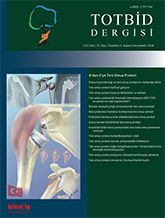
Proximal humerus fractures are commonly observed in the elderly population, constituting 5-6% of all fractures. Despite achieving successful outcomes with both conservative and surgical treatments, complications such as non-union, malunion, and rotator cuff insufficiency frequently occur. The sequelae resulting from these complications present some of the most challenging problems in shoulder surgery. Anatomical shoulder prosthesis and reverse shoulder prosthesis are frequently utilized in the treatment of proximal humerus fracture sequelae. Reverse shoulder prosthesis has demonstrated promising results, especially in cases with rotator cuff insufficiency and complex deformities. However, the complication rates are significant, necessitating patient selection and surgical planning. The assessment and planning process, particularly evaluating the condition of the tubercles, bone defects, and determining limb length pre-operatively, can enhance success rates and reduce complications. In conclusion, reverse shoulder prosthesis, when guided by detailed anatomical and functional evaluations, offers a viable option for treating proximal humerus fracture sequelae.